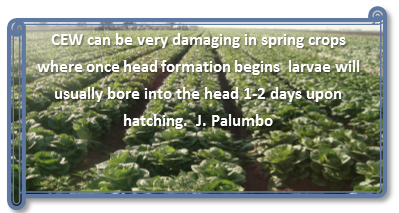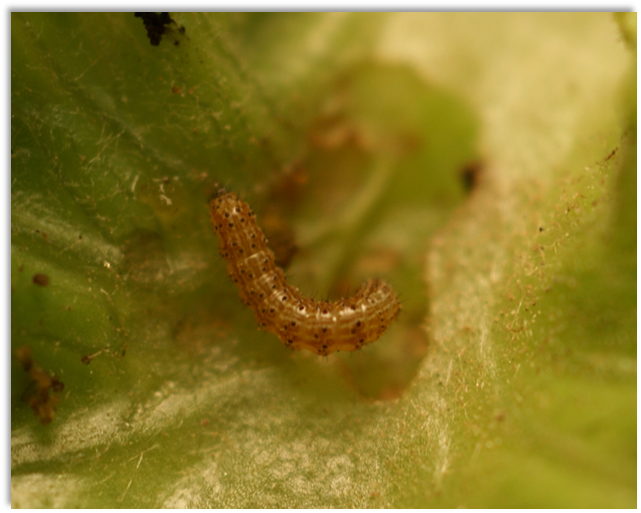
|
|
|
|

|
|||
|
|
|||
|
As the produce season begins to wind down, it would be wise to keep a look out for
corn earworm (CEW); they are historically active on spring head lettuce. In the
last few years, unusually high CEW abundance has been reported by PCAs on late head
lettuce, particularly in the Dome/Wellton areas. Given the CEW trap catches this
fall and winter, one might expect to see more CEW than normal, but then again it
is impossible to predict. Nonetheless, CEW can be very damaging in spring crops
where once head formation begins larvae will usually bore into the head 1-2 days
upon hatching. Corn earworm is much more likely to bore into lettuce heads than
other Lepidoptera
 
Remember, When in Doubt . . . . . “SCOUT”
Click picture to listen to John’s update
To contact John Palumbo go to: jpalumbo@ag.arizona.edu |
|||
| Back | |||
|
For questions or comments on any of the topics please contact Marco Pena at the Yuma Agricultural Center.
|
|||
|
Home |
Cotton | Veggies |
Forages | Grains
| Citrus |
Crop x Crop Insects | Diseases| Weeds | Pesticides | Economics | News | Weather | Research | Photos | Contacts | General Info. Copyright © 2001 University of Arizona, College of Agriculture and Life Sciences Webmaster: Al Fournier (acis@ag.arizona.edu) |
|||
